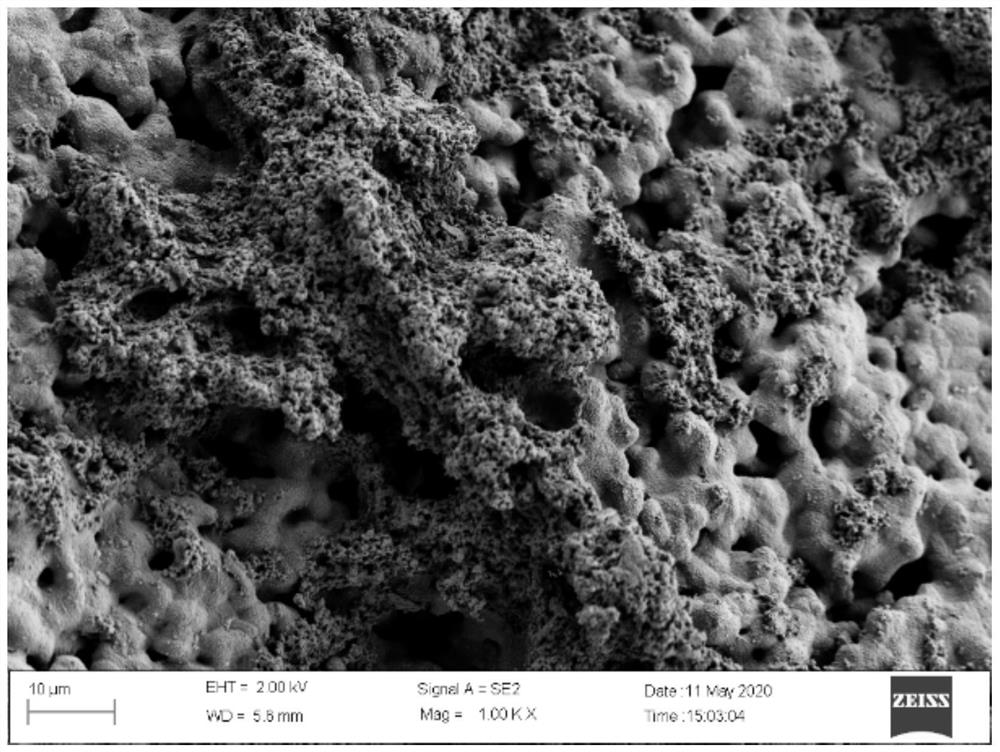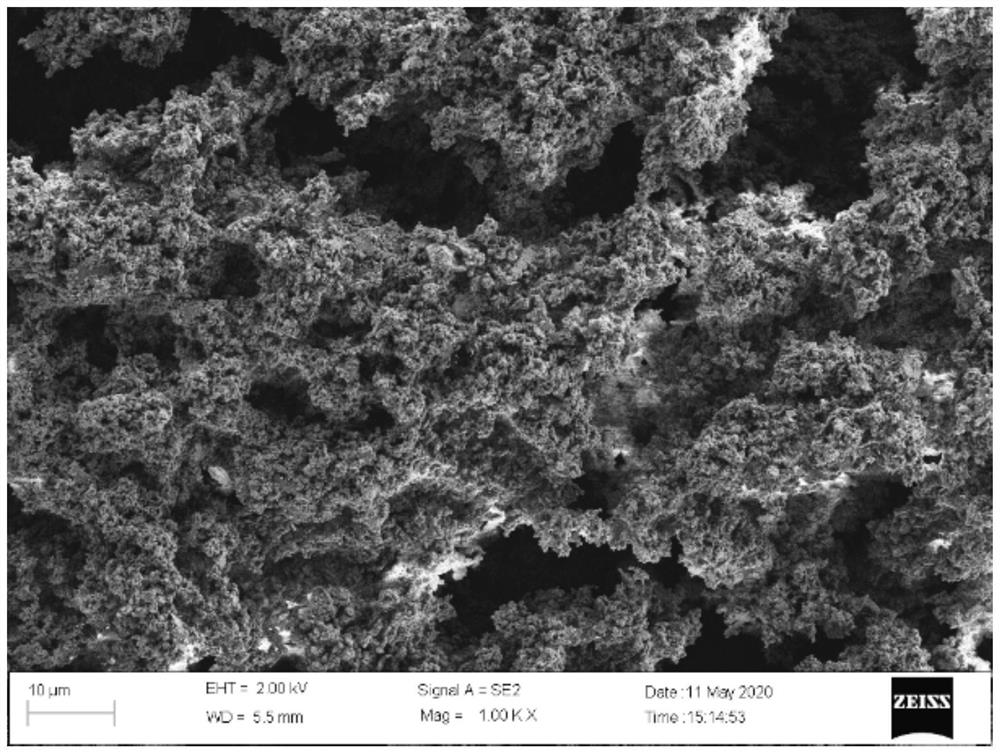Graphdiyne composite filtering membrane as well as preparation method and application thereof
A composite filtration and graphdiyne technology, applied in chemical instruments and methods, membrane technology, semi-permeable membrane separation, etc., can solve the problems of low loading rate, improper arrangement, poor distributability, etc., and achieve low energy consumption and simple operation. Effect
- Summary
- Abstract
- Description
- Claims
- Application Information
AI Technical Summary
Problems solved by technology
Method used
Image
Examples
Embodiment 1
[0062] In the present embodiment, the preparation of the graphdiyne composite filter membrane and the desalination of sea water include the following steps:
[0063] 1) Using porous copper with a length of 5 cm, ultrasonically cleaned in water, ethanol and acetone in turn, and stored in acetone for subsequent use after treatment; in a three-necked flask, the porous copper was mixed with a solvent, and heated to 50 °C under argon protection. °C, wherein the solvent is a mixture of 100 mL of acetone and 5 mL of pyridine.
[0064] 2) 10 mg of hexaethynylbenzene was dissolved in 50 mL of acetone to obtain an acetone solution of hexaethynylbenzene.
[0065] 3) The acetone solution of hexaethynylbenzene in step 2) was slowly contacted with the mixture of porous copper and solvent in step 1) within 2h, and then the coupling reaction 1 was carried out at 50°C under argon and dark conditions. The graphdiyne composite filter membrane was prepared in 2019.
[0066] 4) Rinse the graphdi...
Embodiment 2
[0070] In this embodiment, in step 3), the reaction time of the polyacetylene compound and porous copper in the solvent is 3 days, and the remaining steps are the same as those in embodiment 1.
[0071] The results of the separation test in Example 2 are shown in Table 1.
[0072] figure 2 is the SEM image of the graphdiyne composite filter membrane prepared in Example 2, from figure 1 It can be seen that the film cannot completely cover the surface of the porous copper, and the pores on the surface of the porous copper are directly exposed.
Embodiment 3
[0074] In this embodiment, in step 3), the reaction time of the polyacetylene compound and porous copper in the solvent is 5 days, and the remaining steps are the same as those in embodiment 1. In this embodiment, the thickness of the graphdiyne layer is 20 μm.
[0075] The results of the separation test in Example 3 are shown in Table 1.
[0076] image 3 is the SEM image of the graphdiyne composite filter membrane prepared in Example 3, from figure 1 It can be seen that the graphdiyne layer completely covers the surface of porous copper and the graphdiyne layer is relatively loose.
[0077] Table 1
[0078]
PUM
| Property | Measurement | Unit |
|---|---|---|
| Thickness | aaaaa | aaaaa |
| Thickness | aaaaa | aaaaa |
Abstract
Description
Claims
Application Information
 Login to View More
Login to View More - R&D
- Intellectual Property
- Life Sciences
- Materials
- Tech Scout
- Unparalleled Data Quality
- Higher Quality Content
- 60% Fewer Hallucinations
Browse by: Latest US Patents, China's latest patents, Technical Efficacy Thesaurus, Application Domain, Technology Topic, Popular Technical Reports.
© 2025 PatSnap. All rights reserved.Legal|Privacy policy|Modern Slavery Act Transparency Statement|Sitemap|About US| Contact US: help@patsnap.com



